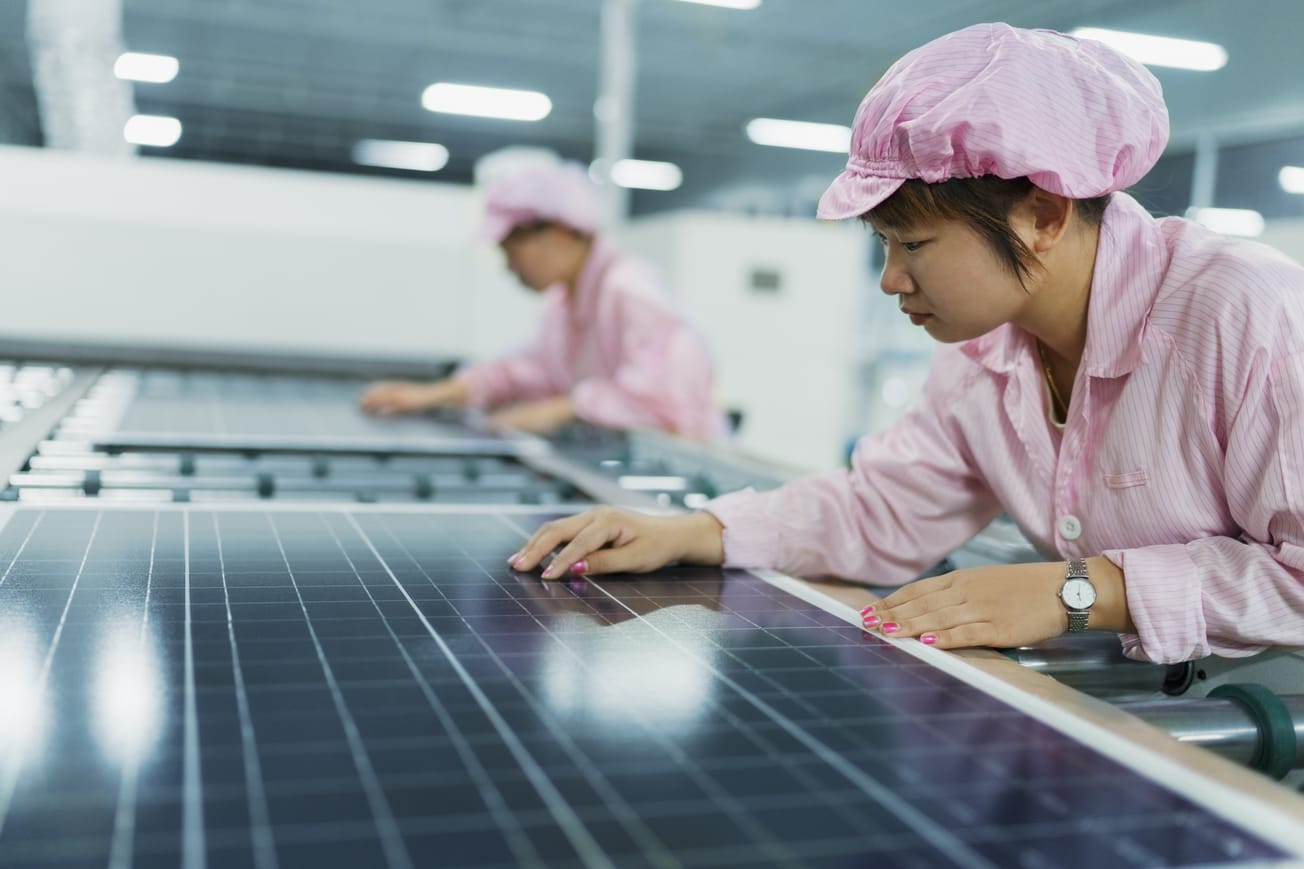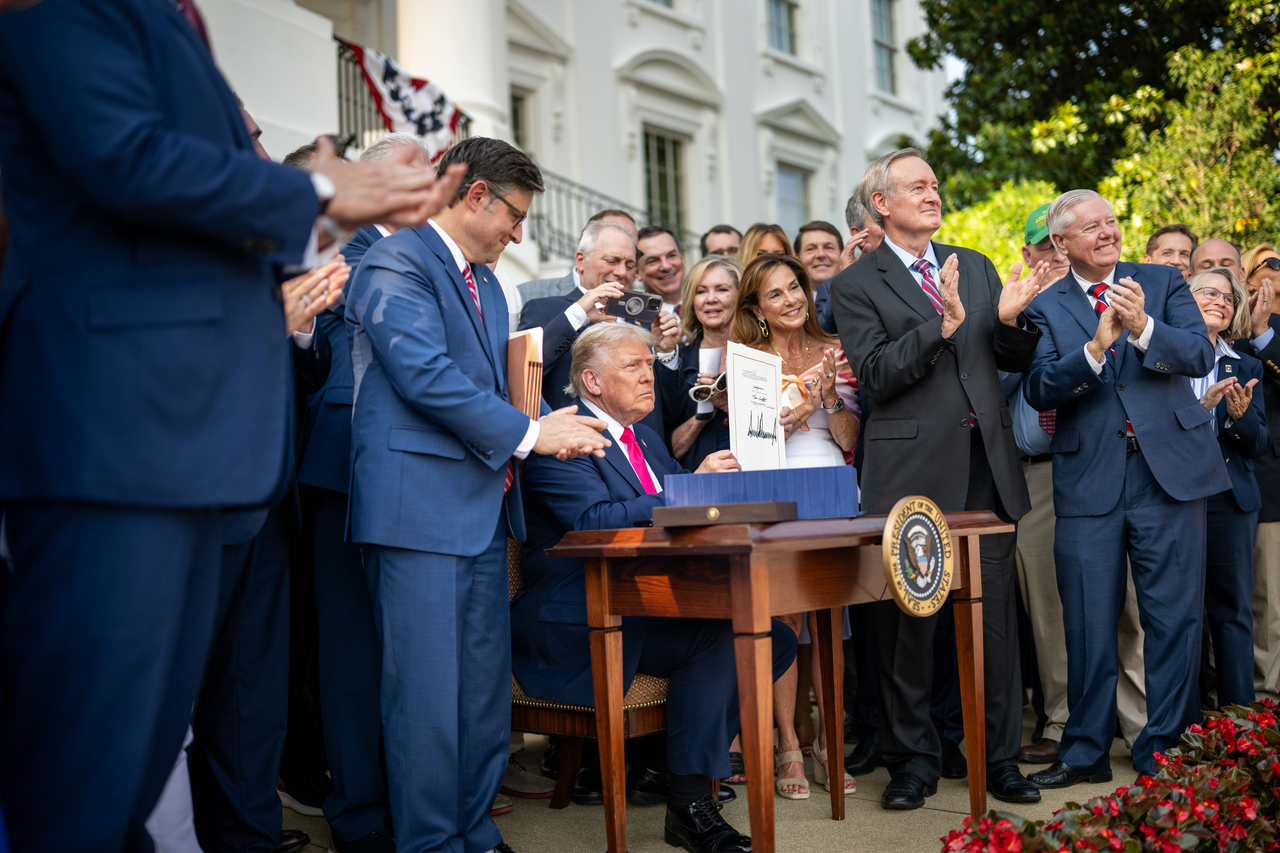In the grand theater of global climate action, an unexpected protagonist has emerged to accelerate the world's transition to clean energy. While Western nations debate the merits of industrial policy and grapple with the political complexities of subsidy programs, China has quietly revolutionized the economics of green technology through a comprehensive strategy of strategic subsidies and supply chain optimization. The result is nothing short of transformational: solar panels, electric vehicles, and battery storage systems that were once luxury items for wealthy nations have become accessible to developing countries across Africa, Asia, and South America.
This sweeping transformation marks one of the most consequential environmental and economic shifts of the 21st century, challenging deeply held assumptions in Western discourse about free markets and fair competition. China’s strategic subsidization of green technology stands in sharp contrast to the United States’ enduring support for legacy sectors such as agriculture and fossil fuels. While America has spent decades underwriting corn farmers and oil conglomerates, China has deliberately and aggressively invested in the technologies poised to define a sustainable global future.
The data paints a compelling picture. Between 2009 and 2023, China poured an average of $16 billion annually into its electric vehicle industry, building a robust domestic market and securing global dominance. In solar energy, Chinese firms received over $4 billion per year in subsidies from 2011 to 2023, support that created more than 300,000 manufacturing jobs and drove global solar panel prices down by more than 50%, making clean energy more accessible worldwide.
In stark contrast, U.S. federal and state governments continue to funnel approximately $21 billion annually into fossil fuel subsidies, alongside another $25 to $50 billion each year in agricultural supports. This misalignment of priorities not only weakens America’s competitive standing in the global clean energy economy but also perpetuates dependence on outdated and polluting industries. As the world races toward a low-carbon future, China is setting the pace—while the United States risks falling further behind.
The environmental implications of this divergent approach are profound. Chinese subsidies have not merely created industrial champions; they have fundamentally altered the global cost structure of clean technology, making renewable energy and electric transportation accessible to billions of people who would otherwise remain dependent on fossil fuels. This represents a form of inadvertent climate diplomacy that will likely prove more effective than international treaty obligations or carbon pricing mechanisms.
The Architecture of China's Green Technology Revolution
China's dominance in green technology did not emerge by accident. It represents the culmination of a deliberate, multi-decade strategy that combines direct subsidies, supply chain integration, and economies of scale to achieve cost reductions that seemed impossible just two decades ago. The scope and sophistication of this approach becomes clear when examining specific sectors.
In electric vehicles, the Chinese government's support has been both comprehensive and strategic. The Center for Strategic and International Studies found that government support represented 18.8% of total electric car sales between 2009 and 2023, with the ratio of spending to EV sales declining from over 40% in the pre-2017 period to just 11% in 2023. This declining subsidy intensity reflects the program's success in achieving scale economies and technological maturity.
The rise of BYD, now the world’s largest electric vehicle manufacturer, offers a compelling example of how sustained government support can transform an industry. Between 2020 and 2022, direct subsidies to BYD surged from approximately $257 million to $2.4 billion, increasing from 1.1% to 3.5% of the company’s total revenue. Yet these headline figures capture only a fraction of the broader ecosystem that has fueled the company’s ascent. BYD benefits from a multilayered web of incentives: lower input costs due to subsidies for battery producers, consumer subsidies that boost electric vehicle demand, and preferential access to public procurement contracts that give it a decisive edge over foreign competitors.
If the electric vehicle sector showcases China’s industrial strategy in motion, the solar industry demonstrates its full force. Between 2011 and 2023, China invested more than $50 billion to expand its solar photovoltaic manufacturing capacity, constructing a vertically integrated supply chain that now produces over 80% of the world’s solar panels. The impact has been revolutionary: manufacturing costs plummeted from $5 per watt in 2000 to less than $0.25 per watt by 2023, a staggering 95% reduction. This dramatic cost decline has positioned solar energy as the most affordable form of electricity generation in many parts of the world, fundamentally reshaping global energy markets and accelerating the clean energy transition.
China’s dominance in the battery storage sector offers yet another striking example of how early, strategic, and sustained investment can shape the future of emerging technologies. In 2024 alone, China added an astounding 42.37 GW / 101.13 GWh of new storage capacity—an increase of 130% from the previous year—securing a formidable 38% share of the global energy storage market. With projections showing the Chinese energy storage industry growing from $223 billion in 2024 to an estimated $2.45 trillion by 2034, the scale and ambition of its strategy reflect both surging domestic demand and expansive global reach.
What sets China’s approach apart is not merely the volume of investment but the depth of its integration across the entire value chain. Rather than offering piecemeal subsidies to isolated firms or technologies, China has cultivated fully interconnected industrial ecosystems, where upstream suppliers, downstream manufacturers, and end markets are tightly aligned. These ecosystems generate powerful network effects and supply chain efficiencies, allowing Chinese firms to drive down costs in ways that traditional, market-driven approaches in the West cannot easily replicate. This holistic, systems-level strategy has positioned China not only as a leader in battery storage but as an architect of the energy technologies that will define the decades ahead.
The Global Democratization of Clean Technology
The true measure of China's green technology revolution lies not in domestic market share or export revenues, but in its transformative impact on developing countries that were previously excluded from the clean energy transition. Across Africa, Asia, and South America, Chinese-manufactured solar panels, electric vehicles, and battery systems are enabling nations to leapfrog fossil fuel infrastructure and build sustainable energy systems from the ground up.
In Africa, the transformation is particularly striking. Chinese solar and wind technology exports to the continent surged 153% between 2020 and 2024, with renewable energy projects now accounting for 59% of China's 49 energy projects across Africa. This represents a fundamental shift from China's earlier focus on coal and oil infrastructure. Countries like South Africa are witnessing the construction of massive Chinese-built solar farms, while off-grid solar home systems manufactured in China are bringing electricity to rural communities across Sub-Saharan Africa for the first time.
The impact of China’s green investment strategy extends well beyond infrastructure deployment. Increasingly, Chinese companies are reorienting their overseas renewable energy efforts toward smaller-scale, community-centered projects that emphasize social well-being. This shift reflects a more mature and nuanced understanding: that true sustainable development is not merely a matter of megaprojects, but of ensuring that clean technology serves as a catalyst for inclusive, locally grounded economic growth.
The scale of this transformation becomes clear when examining specific markets. Brazil imported $735 million worth of Chinese battery electric vehicles in 2023, nearly three times the value of Mexico's imports. In Costa Rica, Chinese manufacturers now supply 70% of electric vehicles, led by BYD. Even in smaller markets like Peru, BYD sold nearly 1,000 battery electric vehicles in 2024, representing significant growth in a country where electric vehicles were virtually unknown just five years ago.
Perhaps most strikingly, this rapid expansion is unfolding even in the face of market saturation. By late 2024, Brazilian ports were reportedly congested with more than 70,000 unsold Chinese electric vehicles—a vivid illustration of the bold, high-volume production and aggressive pricing strategies that Chinese manufacturers are deploying to cement their dominance. While such oversupply may appear economically irrational in the short term, it reveals a long-game strategy: one that values market penetration, infrastructure presence, and technological adoption over immediate profit.
A parallel story is emerging in the battery storage sector. Chinese firms are harnessing the scale of their domestic market to offer storage solutions at prices that dramatically lower the barriers to renewable energy adoption, particularly in countries with limited or underdeveloped grid infrastructure. This is a game-changer for developing nations, where intermittent solar and wind sources require affordable, reliable storage to ensure consistent electricity access. By making clean energy more viable in these contexts, China is not only exporting technology but helping to reshape the global energy landscape.
The environmental impact of this global technological shift is nothing short of transformative. In a historic milestone, renewable energy production in developing nations now exceeds that of fossil fuel sources, an achievement made possible by the dramatic cost reductions driven by subsidized Chinese manufacturing. According to the International Renewable Energy Agency, most new renewable energy projects now outcompete even the cheapest fossil fuel alternatives on price alone.
This revolution in affordability is propelled by what economists describe as the “open trade multiplier effect.” A landmark study by UC San Diego found that open, globalized supply chains in solar panel production saved countries an estimated $67 billion underscoring how China’s manufacturing approach delivers tangible benefits far beyond its borders. These savings are not abstract. They represent real, measurable increases in clean energy deployment across the Global South, enabling countries with limited financial resources to leapfrog into a renewable future that would have been otherwise out of reach.
The speed of this transformation is unprecedented in the history of energy transitions. China added 277 gigawatts of solar capacity in 2024 alone, a figure that surpasses the entire solar capacity of the United States. More importantly, China has reached 1 terawatt of installed solar capacity, creating a manufacturing ecosystem with sufficient scale to supply global demand at historically low prices.
For developing countries, this represents an opportunity to avoid the carbon-intensive development path followed by industrialized nations. Rather than building coal plants and oil refineries, countries across Africa, Asia, and South America can now construct renewable energy systems that are both environmentally sustainable and economically competitive. This "leapfrogging" effect may prove to be one of the most important factors in global efforts to limit climate change.
A Tale of Two Subsidy Systems: Green Technology vs. Traditional Industries
The stark contrast between China’s green technology subsidies and America’s longstanding support for traditional industries reveals two fundamentally divergent visions of economic development and environmental responsibility. While both countries rely on subsidies as instruments of industrial policy, the sectors they choose to uplift, and the values those choices reflect, could not be more different.
In the United States, agricultural subsidies constitute one of the most expansive and deeply entrenched support systems in the world. The federal government spends more than $30 billion annually propping up the agricultural sector, with the 2018 Farm Act alone projected to cost $428 billion over a five-year span. In 2024, direct payments to farmers reached an all-time high of $28 billion, comprising nearly half of total farm income. Between 2015 and 2021, the government distributed over $478 billion in various forms of agricultural support, including crop insurance, disaster relief, and conservation programs.
This support is not only vast but enduring. The Environmental Working Group’s comprehensive database reveals that from 1995 to 2024, U.S. farm subsidies totaled $539 billion. Remarkably, nearly 10,000 farmers received federal payments for 40 consecutive years, highlighting a system more oriented toward preserving the status quo than fostering innovation or environmental sustainability.
In contrast, China has focused its subsidies primarily on the industries of the future: clean energy, electric vehicles, solar technology, betting on long-term transformative growth. The result is not only a growing economic edge but a profound reshaping of global energy and environmental trajectories.
American fossil fuel subsidies offer an even more revealing counterpoint to China’s strategic investment in green technologies. Conservative estimates place direct U.S. subsidies to the fossil fuel industry at approximately $20 billion annually, a figure that grows substantially when broader tax breaks and deductions are included. A closer look at the tax code exposes the depth of this institutional support: the intangible drilling cost deduction alone is projected to deliver $1.7 billion to oil and gas companies in 2025, totaling $9.7 billion over the next decade. And during the 2020 pandemic, fossil fuel giants claimed $8.2 billion under the CARES Act, underscoring how these industries benefit from both targeted subsidies and general economic relief mechanisms.
The environmental consequences of these divergent subsidy strategies are stark. China’s $230 billion investment in electric vehicles has catalyzed the rise of a global industry that is rapidly replacing internal combustion engines, offering a viable path toward decarbonized transport. In contrast, America’s $20 billion in annual fossil fuel subsidies continues to underwrite the extraction and consumption of carbon-intensive energy, effectively anchoring the nation to a legacy of pollution.
Likewise, China’s $50 billion commitment to solar manufacturing has helped drive a global plunge in renewable energy costs, making clean power accessible across the world. Meanwhile, the United States spends roughly $30 billion each year on agricultural subsidies that primarily support commodity crops, many of which rely heavily on synthetic fertilizers, pesticides, and monoculture farming methods that deplete soil health and degrade ecosystems. In sum, while China’s subsidies are laying the foundation for a cleaner, more sustainable global economy, America’s continue to reinforce systems that erode both environmental resilience and long-term economic competitiveness.
The contrast in efficiency between these subsidy approaches is equally revealing. China’s support for electric vehicles, once accounting for more than 40% of a vehicle’s sales value, has steadily declined to just 11% by 2023, a deliberate tapering that reflects a maturing market now capable of competing without government crutches. Plans to phase out subsidies altogether signal a successful transition from state-supported infancy to commercial self-sufficiency. In stark contrast, American subsidies for agriculture and fossil fuels show no such trajectory. Rather than diminishing, these programs have become more deeply entrenched, with continued political backing regardless of market maturity or environmental cost.
The environmental returns on investment further underscore the divergence in strategic outcomes. China’s $50 billion investment in solar manufacturing has driven the cost of solar panels down to just $0.25 per watt, making solar power the most affordable source of electricity in many parts of the world. This breakthrough has enabled widespread deployment of renewables across developing nations, unlocking the potential to avoid billions of tons in future carbon emissions.
The strategic divergence between these two approaches is becoming increasingly clear. While the United States continues to channel public funds into industries emblematic of a fading economic era, China is rapidly securing dominance in the sectors that will shape the global economy of the future. Chinese firms now command over 80% of global solar panel production, control 38% of the energy storage market, and are swiftly expanding their footprint in the electric vehicle sector. This ascendancy is not the product of pure market forces, but the result of deliberate, long-term government investment in technologies with vast economic and environmental potential.
More critically, these contrasting strategies carry vastly different consequences for the planet. U.S. subsidies for fossil fuels and industrial agriculture perpetuate carbon emissions, ecological degradation, and an unsustainable development model. In contrast, China’s green technology subsidies, regardless of the geopolitical or trade concerns they may raise, are actively accelerating the global transition to clean energy and enabling developing countries to leapfrog carbon-intensive growth trajectories.
This is not to suggest that Chinese industrial policy is without flaws, nor that all American subsidies are misguided. Agricultural support can play a vital role in ensuring food security and stabilizing rural economies, and some fossil fuel tax provisions were originally designed to meet legitimate policy needs. But the escalating environmental crisis demands a fundamental rethinking of public priorities. It is no longer enough to ask whether a subsidy supports jobs or tradition. We must ask whether it advances the long-term well-being of people, ecosystems, and the planet itself. In that light, the question is not whether to subsidize, but what future we are choosing to subsidize.
Quantifying The Environmental Dividend
The environmental benefits of China’s green technology subsidies reach far beyond its own borders, delivering what may be one of the most consequential positive externality in modern economic history. By transforming the global cost structure of clean technologies, China has not only reduced its domestic emissions, but has reshaped the trajectory of the global energy transition.
Nowhere is this impact more evident than in the stunning drop in solar panel prices. Over the past decade, costs have plummeted by 90%, with the most dramatic declines coinciding with China’s rapid scale-up of manufacturing capacity. This cost revolution has made solar energy the most affordable form of electricity generation in regions encompassing nearly two-thirds of the global population. According to the International Energy Agency, these price reductions have accelerated renewable energy adoption by at least a decade—an astonishing gain made possible by China's strategic industrial planning.
The implications for developing countries are particularly transformative. Across Africa, Asia, and South America, nations now have access to clean energy solutions that are not only environmentally sound but economically competitive with fossil fuels. This marks a historic shift in the logic of development: for the first time, countries can pursue modern economic growth without being locked into the carbon-intensive infrastructure that defined previous waves of industrialization. China’s green subsidies, in this light, are not just a domestic policy, they are a global lever, altering the possibilities for climate action and sustainable progress in every corner of the world.
The transportation sector offers an equally powerful testament to the environmental gains made possible through China’s green industrial strategy. Over the past decade, Chinese electric vehicle (EV) manufacturing has driven battery costs down by an astonishing 85%, rendering EVs cost-competitive with internal combustion engines in numerous global markets. This dramatic price shift is enabling developing nations to begin electrifying their transportation systems without the prohibitive infrastructure costs that would have made such efforts unthinkable just a decade ago.
Brazil stands as a compelling example. With Chinese automakers now accounting for 90% of electric vehicle sales in the country, Brazil is embarking on a significant transition away from gasoline-powered transport. As the largest economy in Latin America with a rapidly expanding middle class, Brazil’s shift to electric mobility holds the potential to avert millions of tons of carbon emissions in the coming decades. Similar trends are taking root across Latin America, Africa, and Asia, where Chinese EVs are increasingly becoming the preferred option for consumers and governments alike, ushering in a new era of cleaner, more sustainable transportation.
The battery storage revolution, driven by the scale and efficiency of Chinese manufacturing, is unlocking a new wave of environmental progress by addressing one of renewable energy’s most persistent challenges: intermittency. For decades, the inability to store solar and wind power reliably limited their potential. Now, countries rich in renewable resources can deploy cost-effective storage systems that ensure consistent electricity supply, even when the sun isn’t shining or the wind isn’t blowing. This breakthrough is especially transformative for developing nations, where unreliable grid infrastructure has long been a barrier to renewable energy adoption.
Perhaps most importantly, China’s green technology subsidies are allowing developing countries to bypass the carbon-intensive development model historically followed by industrialized nations. Instead of investing in coal-fired power plants, oil refineries, and gasoline-based transportation networks, these nations can leapfrog directly into a cleaner future, powered by renewables and electric mobility. This leapfrogging effect may be one of the most critical levers in the global effort to limit catastrophic temperature rise.
The ripple effects of these environmental gains extend far beyond the immediate reduction in emissions. As renewable energy becomes more affordable and reliable, it generates powerful economic incentives for even broader deployment. Many countries that initially turned to Chinese solar panels because of their low cost soon discover that renewable energy also enhances energy security by reducing dependence on volatile fossil fuel imports and insulating national economies from geopolitical shocks. This creates a virtuous cycle in which environmental progress drives economic resilience, and economic incentives accelerate the clean energy transition.
Policy Implications and the Path Forward
The remarkable success of China’s green technology subsidies holds powerful lessons for policymakers around the world, especially in the United States, where public subsidies continue to overwhelmingly favor traditional sectors. The evidence is increasingly clear: when governments make bold, strategic investments in emerging clean technologies, the resulting global environmental benefits can far surpass the initial fiscal outlay. These investments not only accelerate technological innovation and cost reductions, but also enable widespread adoption of sustainable solutions across both developed and developing nations.
At the same time, China’s approach has raised valid concerns about trade equity and industrial competition. European and American manufacturers argue that large-scale Chinese subsidies distort global markets, creating competitive imbalances that threaten the viability of domestic clean tech industries. In response, many Western governments have imposed tariffs on Chinese solar panels and electric vehicles, measures aimed at protecting homegrown industries, but which may also inadvertently slow the pace of clean energy deployment at a time when global climate goals demand urgent action.
Striking a balance between fostering fair competition and maximizing environmental progress remains one of the central policy challenges of the clean energy era. The Chinese example illustrates both the transformative potential of state-led innovation and the geopolitical complexities that arise when industrial policy intersects with climate ambition.
The challenge for policymakers lies in navigating the delicate balance between legitimate trade concerns and the pressing imperative to accelerate the deployment of clean technologies. From a purely environmental standpoint, the most effective path to rapid decarbonization is clear: deploy the most affordable and efficient clean technologies at scale, regardless of their national origin. Yet from an industrial policy perspective, it is equally reasonable for nations to seek to preserve and grow domestic manufacturing capacity in strategically vital sectors like energy, transportation, and infrastructure.
One promising path forward involves not simply creating new subsidy programs, but rethinking and redirecting existing ones. Reallocating a portion of these resources toward clean technology innovation and deployment could significantly boost the competitiveness of American companies, positioning them to join Chinese firms in leading the global clean energy transition. Such a reorientation would not only align industrial policy with climate goals, but also ensure that economic opportunity and environmental progress move hand in hand.
The example of agricultural subsidies is especially instructive, revealing how deeply entrenched subsidy systems can endure long after their original purposes have faded. Many U.S. farm support programs were established during the Great Depression to combat rural poverty and food insecurity, urgent issues at the time, but far less pressing in today’s diversified and globalized economy. Likewise, numerous fossil fuel tax breaks trace back to the early 20th century, when boosting domestic energy production was considered a cornerstone of national security.
Yet these legacy systems, though outdated, continue to command vast public resources. Reforming them offers a powerful opportunity to align fiscal policy with modern environmental and economic priorities. Redirecting even a portion of the tens of billions currently spent on fossil fuel subsidies could meaningfully accelerate the clean energy transition, funding the expansion of renewable power, battery storage, and electric transportation. Similarly, reimagining agricultural subsidies to promote sustainable farming practices, rather than incentivizing commodity overproduction, would help mitigate soil degradation, water pollution, and biodiversity loss. In doing so, policymakers would not only reduce environmental harm but also unlock resources to invest in the technologies and practices that will define a more resilient and sustainable future.
China’s experience underscores the power of a comprehensive, long-term industrial strategy. Its success in green technology has not been the result of isolated investments, but of sustained, coordinated support across entire value chains, from raw material extraction and processing to component manufacturing and final product assembly. This holistic approach has allowed Chinese manufacturers to achieve economies of scale and cost efficiencies that traditional market-driven models could never deliver on their own.
For developing nations, the policy implications are both clear and compelling. The widespread availability of affordable Chinese green technologies offers a rare opportunity to pursue economic development without incurring the environmental and social costs of fossil fuel–based industrialization. Countries that seize this opportunity early can position themselves ahead of the curve, gaining competitive advantages as global carbon pricing, emissions standards, and environmental regulations render carbon-intensive industries increasingly obsolete and unprofitable. In this context, green industrial policy is not only a path to sustainability, it is a strategy for long-term economic resilience.
The Advantages of China's Integrated Approach to Industrial Development
China’s success in establishing global dominance across green industries stems from a sophisticated, multi-tiered industrial strategy that aligns national vision with local execution, private sector dynamism, and educational alignment. At the national level, Beijing sets the overarching direction through comprehensive policy frameworks, such as the Made in China 2025 initiative and successive five-year plans, which identify strategic sectors and outline long-term development goals. However, it is at the subnational level where these ambitions are transformed into tangible outcomes.
Local and regional governments wield significant authority to shape industrial development within their jurisdictions, fostering competition to attract investment and build sector-specific capacity. Career advancement for local officials often hinges on meeting economic performance benchmarks, incentivizing them to act as active agents of industrial promotion. They deploy a wide array of tools, including strategic land use, tax breaks, infrastructure investments, and favorable financing, to create fertile ground for targeted industries to flourish.
This decentralized yet coordinated model fosters both strategic consistency and local adaptability. Approximately 80% of China’s industrial policies originate from subnational authorities: 13% from the central government, 45% from provincial governments, and the remainder from municipal and county levels. This structure allows for policy experimentation and responsiveness to regional conditions, while still adhering to national priorities. The result is a uniquely agile and cohesive ecosystem, one that has propelled China to the forefront of the global clean technology race.
The strategic advantage of this system becomes apparent in how private firms respond to these coordinated signals by gravitating toward locations where government support, infrastructure, and supply chain advantages converge. This has created China's renowned industrial clusters, where entire ecosystems of interconnected businesses, suppliers, and supporting institutions concentrate in specific geographic areas. For example, Shenzhen's electronics manufacturing cluster, Jiangsu's solar panel production hub, or Guangdong's electric vehicle supply chain represent the culmination of years of coordinated policy support that attracted private investment and created self-reinforcing agglomeration effects.
These industrial clusters thrive on what economists describe as "positive spillovers," the mutually reinforcing benefits that arise from shared infrastructure, concentrated pools of specialized labor, the rapid exchange of knowledge among firms, and the lowered transaction costs that come from geographic proximity to suppliers and customers. But the foundation of this system lies in China’s educational priorities, where students and families have increasingly viewed engineering and mathematics as reliable pathways to personal and national prosperity.
Chinese universities now enroll approximately 1.6 million engineering students each year, accounting for 36% of all undergraduate entrants as of 2022, compared to just 6% in the U.S. This focus has produced the world’s largest engineering workforce by far, a cornerstone of the nation’s industrial strength. It reflects not only cultural esteem for technical expertise but also a pragmatic understanding of where future opportunities lie. With engineering jobs projected to grow by 15% annually, students are responding to clear economic signals shaped by national development priorities.
The result is a powerful virtuous cycle: government-led industrial policy fosters private sector clustering, which in turn generates demand for technical talent, further reinforced by an educational system designed to meet that need. This deep alignment between state strategy, market dynamics, and societal values creates a competitive advantage that few nations can replicate through isolated efforts. It is an ecosystem of innovation and production built not just on capital, but on coordination, purpose, and scale.
Reframing the Subsidy Debate
The global influence of China’s green technology subsidies compels a profound rethinking of how the West approaches industrial policy and international trade. While these subsidies undeniably pose competitive challenges for manufacturers in other countries, their environmental impact extends far beyond China’s borders, accelerating clean technology deployment on a scale that may well prove pivotal in the fight against climate change.
The contrast with American subsidy policy is especially stark. While the United States continues to direct vast sums toward fossil fuel extraction and industrial agriculture, China has methodically invested in the technologies that will shape a sustainable future: solar power, electric vehicles, and energy storage. In doing so, Chinese industrial policy, though not necessarily driven mainly by environmental motives, has become one of the most powerful engines of global decarbonization, often outperforming the explicit climate policies of many Western nations.
This is not to dismiss valid concerns about trade fairness or to suggest that China’s motivations are purely altruistic. Rather, it is to argue that the urgency of the climate crisis demands a new standard for evaluating subsidy systems, one that prioritizes their contribution to global sustainability over only their alignment with traditional notions of free-market competition or national advantage.
The path forward requires recognizing a fundamental truth: in an interconnected world confronting growing environmental degradation, the identity of clean technology producers matters less than the pace and reach of their deployment. Thanks to Chinese subsidies, solar panels, EVs, and battery storage have become accessible to billions of people who might otherwise remain tethered to fossil fuels. In this light, China’s industrial strategy represents a form of unintended but profoundly consequential climate diplomacy, arguably more impactful than any treaty or carbon pricing scheme yet devised.
For policymakers in the United States and other advanced economies, the Chinese example presents both a formidable challenge and a powerful opportunity. The challenge lies in building competitive clean technology industries while upholding the principles of open markets and fair trade. The opportunity lies in reimagining subsidy frameworks, shifting support away from environmentally destructive sectors and toward technologies that align economic growth with ecological responsibility.
China’s success in fostering green industries through strategic, long-term investment proves that well-designed industrial policy can yield environmental dividends far greater than its fiscal cost. In an era defined by the urgency of climate action, this model offers a compelling blueprint for how governments can harness economic tools to accelerate decarbonization and empower sustainable development, especially in the Global South.
The debate, then, is not about whether to use subsidies. Governments around the world already deploy them, often at great scale. The real question is whether these public investments will continue to prop up the industries of the past or be redirected to build the industries of the future. China has made its choice and the environmental benefits are rippling across the globe. The time has come for other nations to decide whether they, too, are ready to align economic policy with the imperatives of planetary health.













